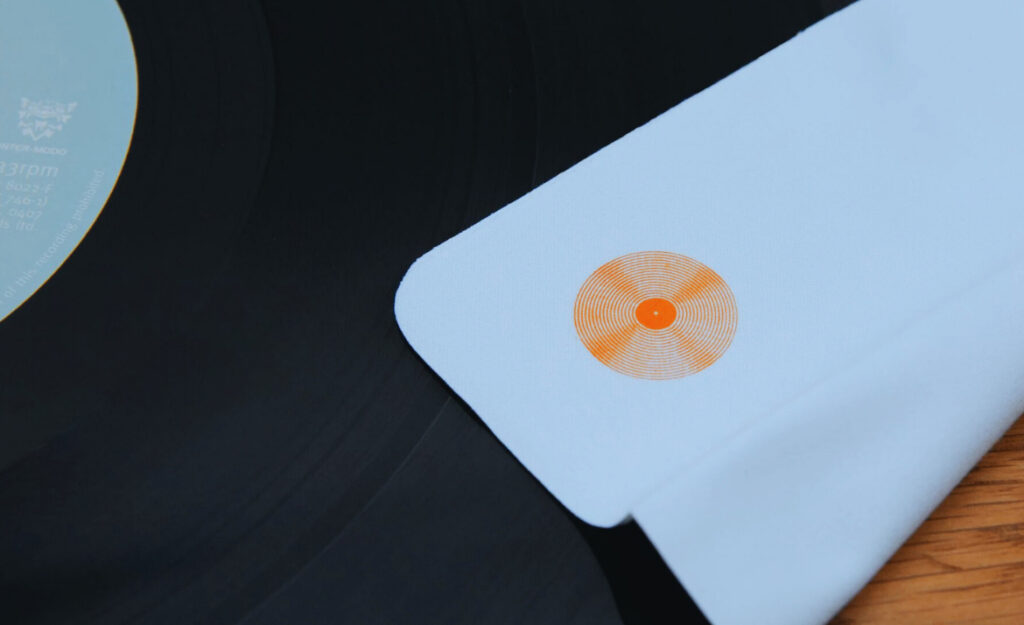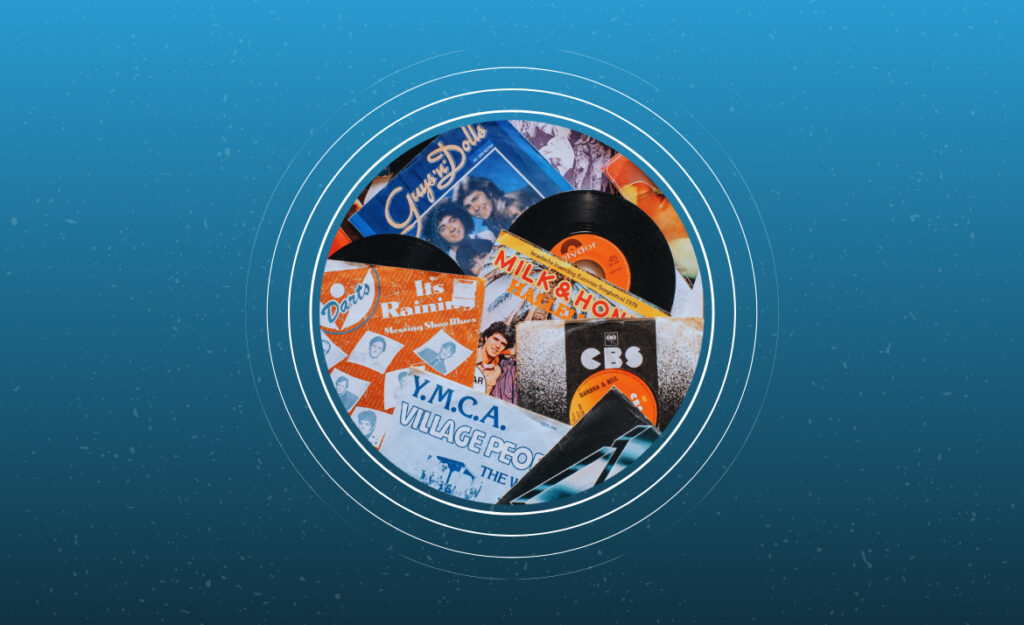
Lifting a vinyl record from its sleeve feels like time traveling, but even a perfect spin can be ruined by a stray speck of dust. For every collector, the difference between clear sound and distracting crackle often comes down to the right maintenance routine. That’s exactly where vinyl cleaning cloths play a starring role; they turn casual care into a preservation ritual you can count on.
Proper cleaning maintains not just the shine but the true sound of every album you cherish. Microscopic particles don’t just dull the appearance—they threaten every groove and harmony. Mastering the use (and care) of vinyl cleaning cloths means your favorite records retain the warmth, clarity, and nostalgia you expect every time you play them.
From the science of cloth fibers to step-by-step routines for safely cleaning both records and sleeves, this article delivers everything you need to keep every groove smooth. Explore our practical tips, comparisons, and action-driven lists designed specifically for record lovers and home enthusiasts.
Choosing Cloth Materials That Protect Without Scratching
Picking the right vinyl cleaning cloth ensures you preserve your records’ audio quality while safeguarding their delicate surfaces from minute harm. Cotton blends, microfiber, and woven synthetics each offer distinct advantages—with very real results you can see and hear.
Instead of just grabbing an ordinary rag, select a cloth designed for audiophile use. These minimize lint, avoid scratching, and lift dirt effectively. Material choice directly determines cleaning safety and result quality, so pay close attention as we break down your best options.
Understanding the Fiber Structure and Why It Matters
Microfiber cloths use a split weave that traps and removes oily fingerprints and fine dust—something dense cotton can’t always match. Users pressing too hard on cotton sometimes notice drag or sticking, which can stress plastic grooves over time.
By contrast, a quality microfiber holds contaminants deep within its fibers, keeping abrasive grime away from the record’s finish. This subtle difference adds up over thousands of cleaning cycles for a vast record collection. Choose cloths with an ultra-fine, lint-free texture for the best results.
A good habit is running your fingers along a sample cloth. If threads shed or catch, skip that brand entirely. Consistent, soft touch means your cloth will serve you through many deep cleans without losing performance or leaving residue behind.
Scenarios: Exactly How a Material Choice Impacts Results
“When I switched to a soft microfiber, my records sounded instantly less crackly,” says Marcus, a seasoned jazz collector. Before, his old T-shirt left streaks and new dust behind.
Another enthusiast noticed her new album covers developed scuffs from stiff synthetic wipes. After swapping to a dampened, woven microfiber, the scuffing stopped—and static buildup dropped as well. Simple changes provide instant relief.
Many collectors will say, “I just want to hear Miles Davis without static.” In these cases, ensuring your cleaning cloth matches the blend and power of your music makes every listen more rewarding. Invest in proven materials from reputable retailers.
| Material | Lint Generation | Cleaning Effectiveness | Recommended Use | Next Step |
|---|---|---|---|---|
| Microfiber | Very low | Excellent | Wet or dry cleaning | Choose for most collections |
| Pure cotton | Moderate | Good (if cleaned) | Gentle dry wipes | Pre-wash before use |
| Woven synthetic | Low | Moderate | Occasional deep cleaning | Test on less valuable discs |
| Blended cloth | Varies | Fair | Accessory care | Use for sleeves not vinyl |
| Paper towels | High | Poor | Avoid | Never use on records |
Practical Ways to Eliminate Dust and Grime from Your Records
Effective dust removal with vinyl cleaning cloths begins with gentle, consistent routines that target both surface grime and deep-seated particles. Clear instructions protect your albums and extend their life, so you’ll enjoy noise-free playbacks every time.
For each record, establish a dedicated cleaning space. Work on a flat, static-free surface using a high-quality cloth. This turns every session into a satisfying ritual instead of a risky chore.
Routine Cleaning Made Effortless
Grip your record by the edges and center label. A circular wipe, following the groove pattern, prevents debris from being pushed deeper. This method is especially important for rare pressings and colored vinyl.
- Store your cleaning cloths separately from other fabrics—this prevents cross-contamination with lint or chemicals that other laundry might contain.
- Use small, light strokes that never press into the grooves. Overpressing can embed particles.
- Always inspect the cloth for debris or threads before wiping your next record for quality assurance.
- Rotate cloth sections frequently as you clean a stack of records to avoid redistributing accumulated dust.
- Dampen the cloth with distilled water only—tap water may leave mineral spots. Squeeze excess liquid to avoid any drips.
A collector might say, “I always finish my session by giving each disc a dry follow-up wipe with a clean section,” ensuring no film remains before placing records back in their sleeves.
Handling Stubborn Spots and Reducing Static
- Gently target sticky fingerprints by folding the cloth and dabbing, never rubbing—this isolates stains without spreading residue across the surface.
- Apply a purpose-made vinyl cleaning solution for tougher smudges, not household cleaners, and remove with a gentle, smooth motion.
- Minimize static before and after cleaning by quickly brushing the cloth on a grounded surface; this simple move dissipates charge and stops dust from reattaching.
- Replace your cleaning cloth when you notice decreased absorbency or any streaking during use to ensure effectiveness.
- Carry a separate small cloth for use just on center labels; these require different care due to printed surfaces and paper textures.
After finishing, leave each record to air dry for a minute so leftover moisture can evaporate, ensuring no streaks or warping before shelving them.
Techniques That Balance Cleaning Power with Safety
Following a set of safe techniques builds lifelong habits that preserve both sound and finish. Every motion with your vinyl cleaning cloths should feel purposeful and gentle—like brushing sand from a lens, every touch has an outsized impact.
Replacing guesswork with process, collectors develop signature routines that suit their preferences in pressure, moisture, and cloth selection. These rituals help maintain both routine records and high-value rarities.
Assessing Cloth Wear and Rotation Practices
Check your cloth monthly for fabric thinning, snags, or embedded particles that might harm delicate grooves. Rotate between two or more cloths if you have a large collection or frequent cleaning sessions.
Decide whether to retire a cloth when noise or visible lint increases post-cleaning. Some enthusiasts fold their used cloth in half after each use, always starting a new session with a fresh section exposed.
When storing cloths for rotation, keep them in a sealed container or resealable bag. This reduces static pickup and environmental contamination—small steps that shield your collection from everyday hazards.
Moisture Management and Its Role in Residue-Free Cleaning
Apply distilled water with a mist sprayer rather than pouring: control is key. Wring out excess liquid until the cloth feels just cool and slightly damp, not saturated. This prevents moisture from pooling in label areas.
Practice by folding a microfiber into quarters, spraying the outermost panel, and using tight circular movements. If streaks remain, dry-buff them out immediately with a new, clean panel of the cloth.
Commit to checking each album’s surface in good light after cleaning. When residue or haze is visible, adjust your technique rather than repeat the same result. Consistency means learning from every session.
Purposeful Storage and Care for Your Cloths
Intentional cloth care rewards you with streak-free cleanings and long-term protection for every LP in your archive. Dedicate a drawer or storage box just for your vinyl cleaning cloths—this makes them easy to grab and reduces the risk of cross-contamination.
Shelf life extends when cloths are laundered with gentle, unscented detergents, minus dryers or fabric softeners. Residue from common laundry additives can cling for multiple cycles, interfering with your next cleaning session.
- Wash cloths separately from other fabrics to control lint and exposure.
- Air dry flat on a lint-free surface; avoid outdoor drying which could introduce pollen or dust.
- Never use bleach or harsh stain removers—opt for mild, record-safe soap only.
- Before tucking a cloth away, check for tough stains or spots; rewash as needed for a “like new” finish each time.
- Schedule monthly cleanings, even if the cloth looks clean—it’s the invisible oils that matter for peak performance.
A well-maintained cleaning system adds years to both your cloths and your beloved albums. It’s an investment in reliable listening pleasure as much as it is in record care.
Building an Efficient Cleaning Routine for Your Collection
Streamline your approach and you’ll keep even an extensive archive clear of static and buildup, thanks to the power of habit. Designing your protocol helps prevent missed steps, ensuring optimal sound every playthrough.
A typical sequence allows you to work in focused batches. For instance, clean all sides of a set, allow drying time, then replace cleaned records before starting another group. This minimizes chances of reintroducing dust or moisture.
Integrating Cloths with Other Maintenance Tools
Pair your cloth with a carbon fiber brush as a pre-clean step to catch larger debris. Use the cloth second, just before returning each album to its sleeve for long-term storage.
Some collectors add a quick run with an anti-static gun post-cleaning; if you don’t have one, simply ground your cleaning area. Apply this rule each session for layers of protection.
Be flexible: for new pressings, spot clean where needed. For older or rare records, complete a two-pass strategy (dry then slightly damp) plus inspection under good light. This custom routine becomes a hallmark of well-tended libraries.
Adapting to Genre-Specific Needs and Listening Habits
If you play mostly classic rock, heavier grooves might require firmer, more frequent wipes—just never add pressure. For delicate jazz records, always favor the lightest touch and maximum cleanliness.
Collectors who DJ regularly adjust by rotating fresh cloths more often since club environments carry extra dust and risk of sticky residue. Scripting your cleaning—“dry, inspect, damp, dry again”—avoids mix-ups during fast-paced sessions.
Family archivists protecting inherited LPs take even more caution with vintage pressings. For these, use only the softest sections of your cloth, avoiding any worn or debris-laden parts for gentle, careful cleaning every time.
Conclusion: Making Every Record Listen-Ready
Every session cleaning records with vinyl cleaning cloths translates to hours of uninterrupted enjoyment. Commit to safe techniques, uphold thoughtful maintenance, and invest in quality materials to preserve the value of your vinyl library.
A careful cloth routine transforms listening from a routine experience to a reliable ritual. It’s the small, consistent acts—inspecting for lint, folding for freshness, washing with care—that uphold each album’s sonic promise over seasons.
Take pride in the sound and look of your collection. Each cleaned groove means anticipation, nostalgia, and discovery remain undimmed by static. Investing in the right cloths is choosing music at its best, every time you press play.



